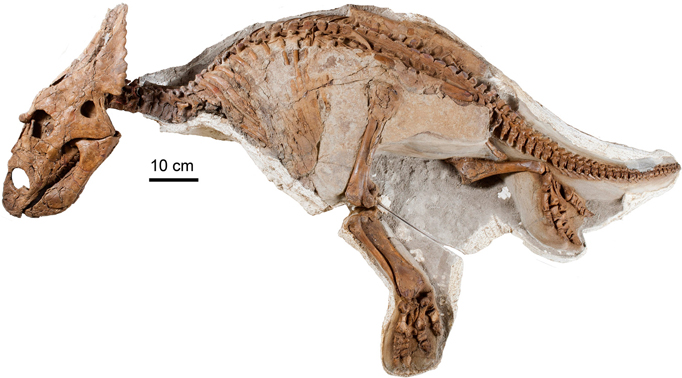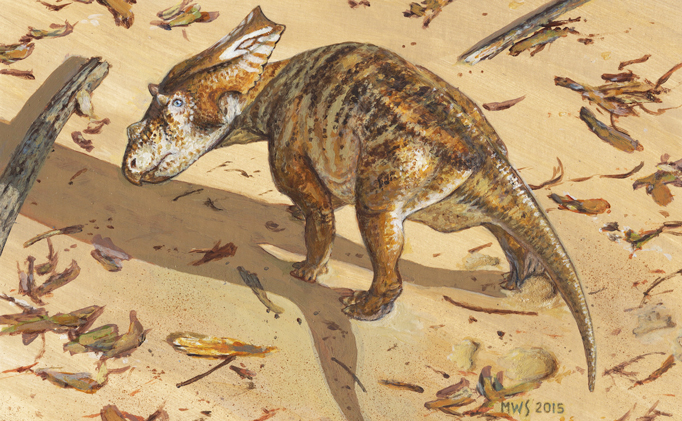Baby Dinosaur Skeleton Findings Revealed
In 2013, a rare discovery of a juvenile Chasmosaurus in Alberta, Canada, made headlines across the globe. Scientists published their research on this first complete skeleton of a baby ceratopsid, (horned dinosaur) this week in the Journal of Vertebrate Paleontology.
The discovery of the approximately 75-million-year-old fossil skeleton allowed Dr. Michael Ryan, curator and vertebrate paleontologist at the Cleveland Museum of Natural History, lead author Dr. Philip Currie of the University of Alberta and their colleagues from the university to refine previous research findings and fill in gaps in the evolution of other horned dinosaurs, such as Triceratops.

“One of the greatest benefits is that we can look at the different body proportions for Chasmosaurus as it grew up,” Currie explained. “We now have an anchor point with the baby that we can compare with all other specimens of this species, and from that comparison can calculate the dimensions, body weights and ages for all other ceratopsid species. We can start filling in the missing pieces.”
One of the biggest surprises the team uncovered was in the comparisons of shapes and relative proportions with adult Chasmosaurus. While researchers expected that a baby dinosaur would have a much shorter frill relative to its skull length than an adult, they found that it also has a different shape. The back of the juvenile skull frill is not broad and squared as in an adult. Instead, the frill narrows towards the back. It is arched with a ridge running down the middle instead being flat on top from one side to the other as in an adult.

“Alberta has long been known as one of the centers for ceratopsian research,” said Ryan, one of the world’s top ceratopsian dinosaur researchers. “The discovery and publication of the baby Chasmosaurus cements Alberta’s leadership in this area.” Ryan is one of Currie’s former students.
The team plans to continue to study the specimen, analyzing different parts of the anatomy and focusing on growth changes and their implications within ceratopsids.
The skeleton will be on exhibit in Tokyo at the National Museum of Nature and Science later this year. It has previously been exhibited at Dinosaur Provincial Park and at the University of Alberta.
See other recent announcements by Cleveland Museum of Natural History.